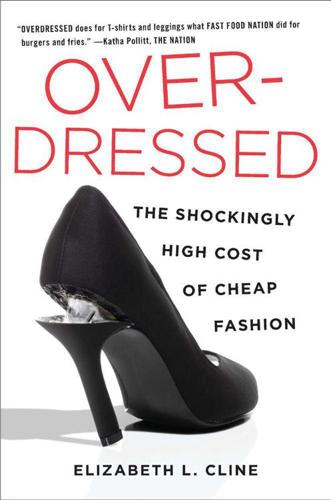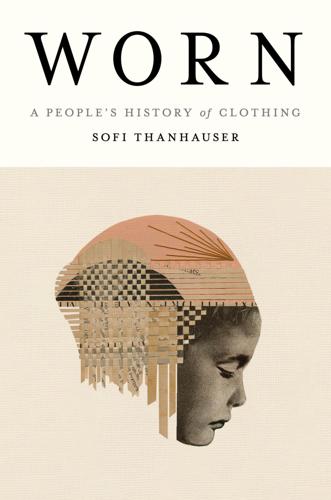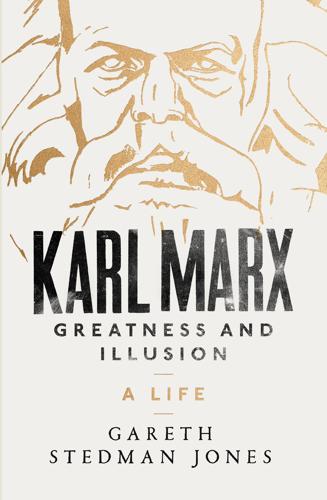invention of the sewing machine
description: the development of a machine for stitching fabric, attributed to various inventors but commercialised by Isaac Singer in the 19th century
7 results

Overdressed: The Shockingly High Cost of Cheap Fashion
by
Elizabeth L. Cline
Published 13 Jun 2012
Human beings have been sewing for thousands of years; some peg it to the last Ice Age.1 It’s store-bought clothing, in its inflexible, prefab form, that is the recent invention. When we entirely gave up homemade and custom clothing, we lost a lot of variation, quality, and detail in our wardrobes, and the right fit along with it. The invention of the sewing machine revolutionized society and fundamentally changed people’s everyday lives. It offered women relief from the countless hours and tedium of hand-sewing. According to the Museum of American Heritage, it took about fourteen hours to make a man’s dress shirt and at least ten for a simple dress.2 Sewing by hand could be enjoyable, but unless you had money to hire a dressmaker or a tailor, it was an obligation to sew and mend every single garment that you, your husband, and your children wore.

The Weightless World: Strategies for Managing the Digital Economy
by
Diane Coyle
Published 29 Oct 1998
Sewing machines were an immediate hit on the domestic market, but it took 40 years for the design to be refined to make them simple and cheap enough for most households. It was not until the 1890s that industrial machines good enough for garment manufacturers went on sale. It took half a century to get from the invention of the sewing machine to the birth of the rag trade sweatshop.9 Another wellknown case study establishes that it took 40 years for commercial gains to result from the introduction of the electric dynamo in the 1880s.10 The Weightless World 7 In fact, there is an entire sub-branch of economic research into the generally slow speed with which new technology is diffused through the economy.

The Warhol Economy
by
Elizabeth Currid-Halkett
Published 15 Jan 2020
Not just apparel production but the fashion design process itself is oriented toward creating economic value (markedly different from the traditional sentiments of poetry, music, and so forth, and certainly at odds with the spirit of Duchamp’s work). In that vein, fashion has moved on a different timeline than other creative industries. With the invention of the sewing machine in 1846, “ready-to-wear” designs were being produced with ease, and by 1880 New York was dominant in apparel manufacturing.7 By 1900, the garment industry accounted for a quarter of the city’s manufacturing, with 134,308 dressmakers, tailors, and factory garment workers, over double the number of carpenters, joiners, painters, and glaziers combined, with most of the industrial activity being located in the Lower East Side.

The Rise and Fall of American Growth: The U.S. Standard of Living Since the Civil War (The Princeton Economic History of the Western World)
by
Robert J. Gordon
Published 12 Jan 2016
Processed food was largely unavailable, and fresh meat was unsafe, so the diet was a monotonous succession of salted pork and starchy foods. Unless home-grown, fruit was all but unavailable except during the summer months, and vegetables available in the winter were limited to a few root vegetables that could be stored. Clothing was crude and, for most women, home-made, and the labor needed to create clothing before the invention of the sewing machine created a further burden for the rural and urban housewife. Dwelling units in 1870 universally lacked indoor plumbing, running water, waste disposal, electricity, telephone, and central heating. Although middle-class and upper-class families built homes in cities and nearby suburbs that today constitute cities’ historic districts, farmers and members of the urban working class faced much more difficult living conditions.
…
Women worked also in manufacturing, primarily in textiles and apparel; the majority of these working women were young, childless, and/or widows.63 Just as the mechanization of the steel industry eliminated the personal satisfaction of skilled workers and forced employees into a homogenous and highly regimented work force, so the invention of the sewing machine created the archetypal sweatshop, in which rows and rows of women sat in front of their machines producing clothing to the drumbeat of their supervisors demands for an ever faster pace of work. The harsh conditions present in 1870, before the arrival of the sewing machine, combine poor working conditions and low pay: I have worked from dawn to sundown, not stopping to get one mouthful of food, for twenty-five cents.

Worn: A People's History of Clothing
by
Sofi Thanhauser
Published 25 Jan 2022
* * * — While the fight to unionize textile workers hit insurmountable obstacles and the fight to protect rayon workers from workplace poisoning stalled, victory was won in garment manufacture. Unlike the textile industry, which had its historical roots first in New England and then the American South, the U.S. garment industry as it had evolved since the invention of the sewing machine was largely centered in New York City. In the early 1900s, a wave of Jewish immigration from the Russian Pale brought teenaged girls with a potent and particular combination of qualities to the Lower East Side en masse. These women were hungry for education, forced into sweatshops, and on fire with Marxism.

Wealth, Poverty and Politics
by
Thomas Sowell
Published 31 Aug 2015
For example, when Alexander Hamilton surveyed the American economy in the early days of United States, he found that most clothes worn by Americans were home-made. That may seem strange today because of today’s far larger market for industrially produced clothing, at lower production costs, in part due to economies of scale, and in part due to the invention of the sewing machine in the nineteenth century, as well as far lower transportation costs, due to the invention of railroads, and later trucks, as well as technological advances in seaborne and then airborne transportation. On the world stage, and over the millennia of recorded history, the expansion of production from the home or local village level to successively larger markets was facilitated by successively larger political units, culminating in nations and empires.

Karl Marx: Greatness and Illusion
by
Gareth Stedman Jones
Published 24 Aug 2016
Kentish Town, where the Marx family settled, was one of the new areas of housing developed during this construction boom. The boom was accompanied by even more striking changes in the production of consumer goods. In clothing, footwear and furniture, as well as building, a technological revolution occurred during the 1850s. The invention of the sewing machine in 1846 and the band saw in 1858, and the adoption of mass sewing and cutting from 1850, provided the basis for the take-off of a large-scale ready-made clothing industry. The application of the sewing machine to shoe sewing in 1857 removed the production bottleneck imposed by hand-sewn shoemaking.